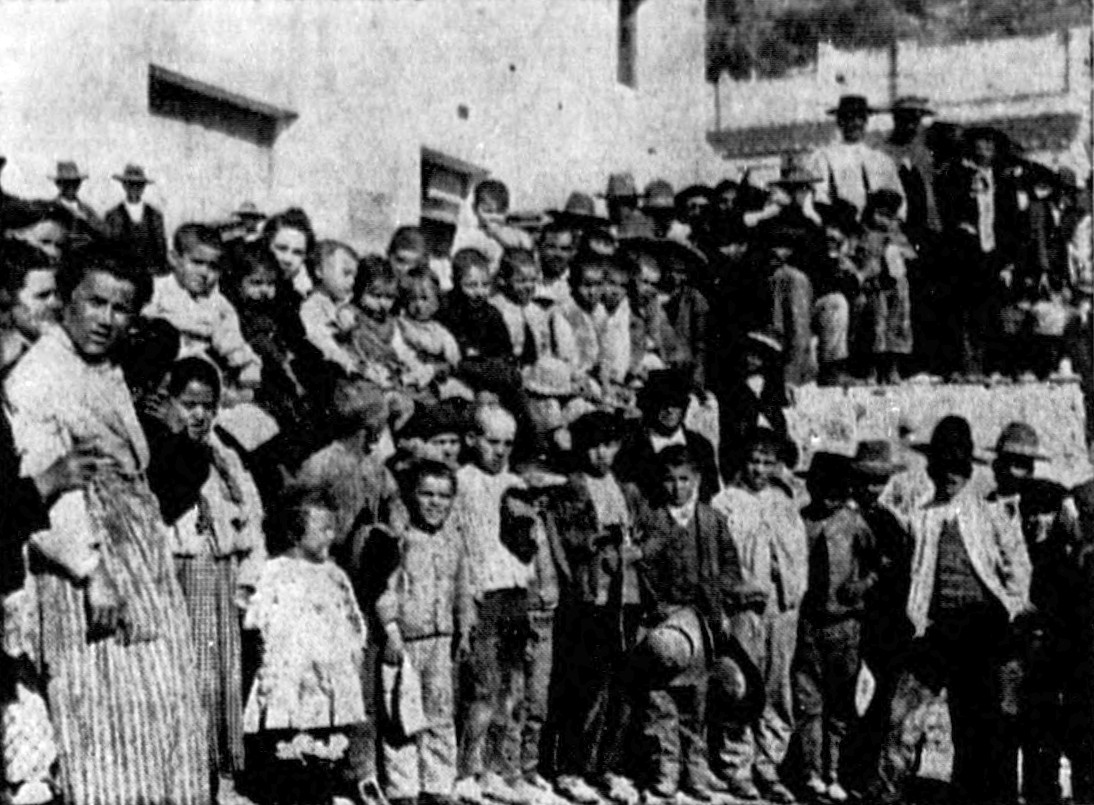

You will study Personal Pronouns.




Imagen: Spanish children arriving to Hawaii en: https://en.wikipedia.org/wiki/Spanish_Americans#/media/File:Spanish_children_from_the_Heliopolis_in_Hawaii,_1907.jpg
Instructions: Read about Spanish Americans and think about the underlined words.
Spanish Americans are the longest-established European-American group. They are the eighth-largest Hispanic group in the United States of America. About 50.5 million Americans are of Latin American descent and therefore they are a majority of which have Spanish ancestry due to five centuries of Spanish colonial settlement and large-scale immigration to both pre and post-colonial Latin America.

Instructions: Read more about Spanish Americans in the US to match sentences 1, 2, 3 to sentences a, b, c.
In colonial times, there were a number of white settlements of Spanish populations in the present-day United States of America with governments answerable to Madrid. The first Spanish settlement was at St. Augustine, Florida, in 1565, followed by others in New Mexico, California, Arizona, Texas, and Louisiana. In 1598, San Juan de los Caballeros was established, near present-day Santa Fe, New Mexico, by Juan de Oñate and about 1,000 other Spaniards also established settlements in San Diego, California (1602), San Antonio, Texas (1691) and Tucson, Arizona (1699). By the mid-1600s the Spanish in America numbered more than 400,000.
1. The white settlements of Spanish populations are now…
2. They established first in…
3. Then, they established in…

Instructions: Look at the following information about Personal pronouns:
A Pronoun is a word that takes the place of a noun.
Personal Pronouns are used to tell the:
Person (Who is speaking?)
Number (Singular or plural)
Gender (masculine, feminine or neuter)
The personal pronouns are:
I
You
He
She
It
We
You
They
Example: Where is Peter? He is at school.
Who is she? She is my sister.

Instructions: Match the pronoun to the noun:
1. Mary
2. David
3. The dog
4. My house
5. You and I
6. You and the boys
7. The girls

Instructions: Fill in the gaps with the appropriate personal pronoun.
Most of the Spanish settler descendants in present-day Texas, California, New Mexico, Colorado, and Arizona self-identified as Spanish-Americans to differentiate themselves nominally from the population of Mexican-Americans. came after the Mexican Revolution.
The spaniards came to the New World seeking land to farm, or occasionally, freedom from religious persecution. In some cases, were descendants of Spanish Jewish converts and Spanish Muslim converts.
Another reason for their emigration was the devastation from the Napoleonic Wars in the first half of the nineteenth century. was followed by defeats in the two Carlist civil wars.
Spanish Americans. (2016). Retrieved and modified September 2016 from https://en.wikipedia.org/wiki/Spanish_Americans

Instructions: Choose the right options in the following text.
The Mexican immigrant population in the United States has remained stable in recent years. He/They account for 28 percent of the 42.4 million foreign-born population—by far the largest immigrant origin group in the country.
When we obtain permanent residence in the United States (also known as receiving a green card) we/they qualify as immediate relatives of U.S. citizens or through other family-sponsored preferences.
Compared to the total foreign-born population, a Mexican person was more likely to be Limited English Proficient (LEP). He/It has less education and lower income, experience a higher poverty rate, and lack health insurance.
Mexican Immigrants in the United States. Retrieved and adapted October, 2016 from http://www.migrationpolicy.org/article/mexican-immigrants-united-states